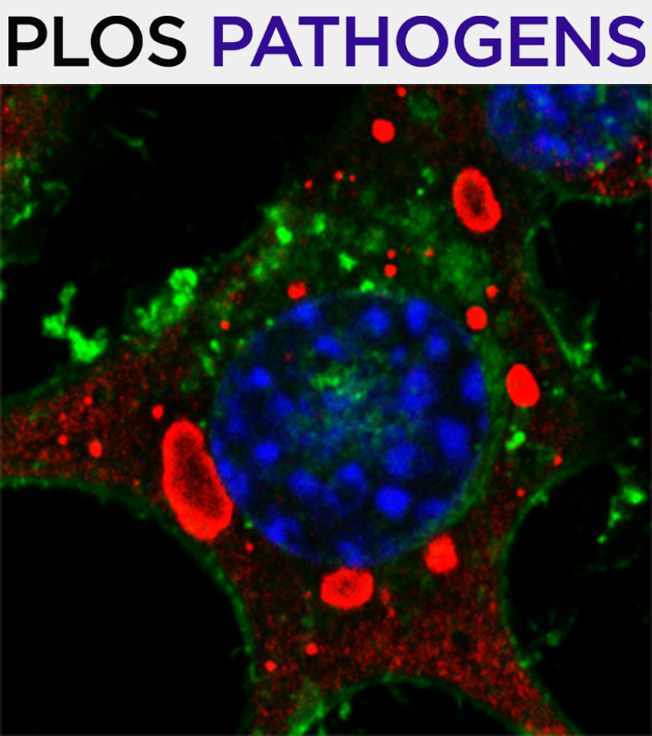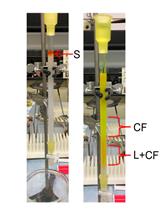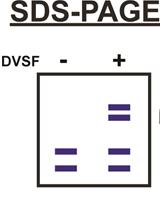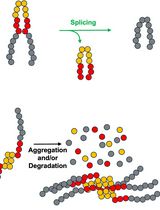- EN - English
- CN - 中文
In vitro Di-ubiquitin Formation Assay and E3 Cooperation Assay
体外双泛素形成检测方法和E3协同分析方法
发布: 2022年11月05日第12卷第21期 DOI: 10.21769/BioProtoc.4547 浏览次数: 1349
评审: Alexandros AlexandratosAndrew MacLeanAnonymous reviewer(s)
Abstract
Ubiquitination is a post-translational modification conserved across eukaryotic species. It contributes to a variety of regulatory pathways, including proteasomal degradation, DNA repair, and cellular differentiation. The ubiquitination of substrate proteins typically requires three ubiquitination enzymes: a ubiquitin-activating E1, a ubiquitin-conjugating E2, and an E3 ubiquitin ligase. Cooperation between E2s and E3s is required for substrate ubiquitination, but some ubiquitin-conjugating E2s are also able to catalyze by themselves the formation of free di-ubiquitin, independently or in cooperation with a ubiquitin E2 variant. Here, we describe a method for assessing (i) di-ubiquitin formation by an E1 together with an E2 and an E2 variant, and (ii) the cooperation of an E3 with an E1 and E2 (with or without the E2 variant). Reaction products are assessed using western blotting with one of two antibodies: the first detects all ubiquitin conjugates, while the second specifically recognizes K63-linked ubiquitin. This allows unambiguous identification of ubiquitinated species and assessment of whether K63 linkages are present. We have developed these methods for studying ubiquitination proteins of Leishmania mexicana, specifically the activities of the E2, UBC2, and the ubiquitin E2 variant UEV1, but we anticipate the assays to be applicable to other ubiquitination systems with UBC2/UEV1 orthologues.
Keywords: Ubiquitin (泛素)Background
Ubiquitination is a three-step process involving the sequential action of E1, E2, and E3 enzymes. In the first step, catalyzed by an E1 ubiquitin-activating enzyme, ubiquitin-adenylate is formed followed by ubiquitin transfer to a conserved cysteine on the enzyme. The second step involves a trans-thioesterification, in which the ubiquitin is transferred to a cysteine on the E2. In the third step, the E2, known as a ubiquitin-conjugating enzyme, cooperates with an E3 ubiquitin ligase to transfer ubiquitin to the target substrate, typically through the formation of an isopeptide bond to a lysine side chain (Zheng and Shabek, 2017). In many cases, target substrates can become poly-ubiquitinated through the attachment of further ubiquitin molecules. This attachment can take place on any of ubiquitin’s seven lysine side chains or on its amino terminal methionine, resulting in many permutations of ubiquitin conjugation (Zheng and Shabek, 2017). Specific ubiquitin linkages are associated with different cellular outcomes, although the understanding of this is incomplete (Komander and Rape, 2012). In an important “off-pathway” reaction, some E2s are also able to catalyze the formation of free di-ubiquitin, alone or with the assistance of a ubiquitin E2 variant (Wu et al., 2003; Wang et al., 2016; Burge et al., 2020).
The parasite Leishmania mexicana assumes different morphologies depending on its host: in the sand fly, it takes the motile promastigote form, whereas in a mammalian host, it takes the immotile amastigote form. Key to mammalian infection is the ability to undergo promastigote to amastigote differentiation. In L. mexicana, the E2 UBC2 and the ubiquitin E2 variant UEV1, which form a heterodimeric complex, are required for this process (Burge et al., 2020). Prior studies of the Saccharomyces cerevisiae UBC2 and UEV1 homologs UBC13 and MMS2, respectively, demonstrated that they could form K63-linked ubiquitin chains in the absence of an E3 (Hofmann and Pickart, 1999; McKenna et al., 2001; Wu et al., 2003; Andersen et al., 2005; Pastushok et al., 2005). By adapting methods used in these studies, the in vitro ubiquitin conjugation assays described here were established to delineate the ubiquitination activities of UBC2 and UEV1: firstly, to assess the cooperation of UBC2 and UEV1 in di-ubiquitin formation and, secondly, to assess the cooperation of UBC2 and UEV1 with E3 ubiquitin ligases (Figure 1). The method described here allows for the assessment of di-ubiquitin formation by an E2 and E2 variant pair and their collective cooperation with an E3 ligase. The assay uses western blotting specifically to detect ubiquitin conjugates. Blotting with an antibody specific to K63-conjugation also enables the assessment of whether the ubiquitin-conjugate products are linked at K63. Although we have not tested other antibodies, we anticipate that the method could easily be adapted to assay antibodies specific to other ubiquitin linkages.
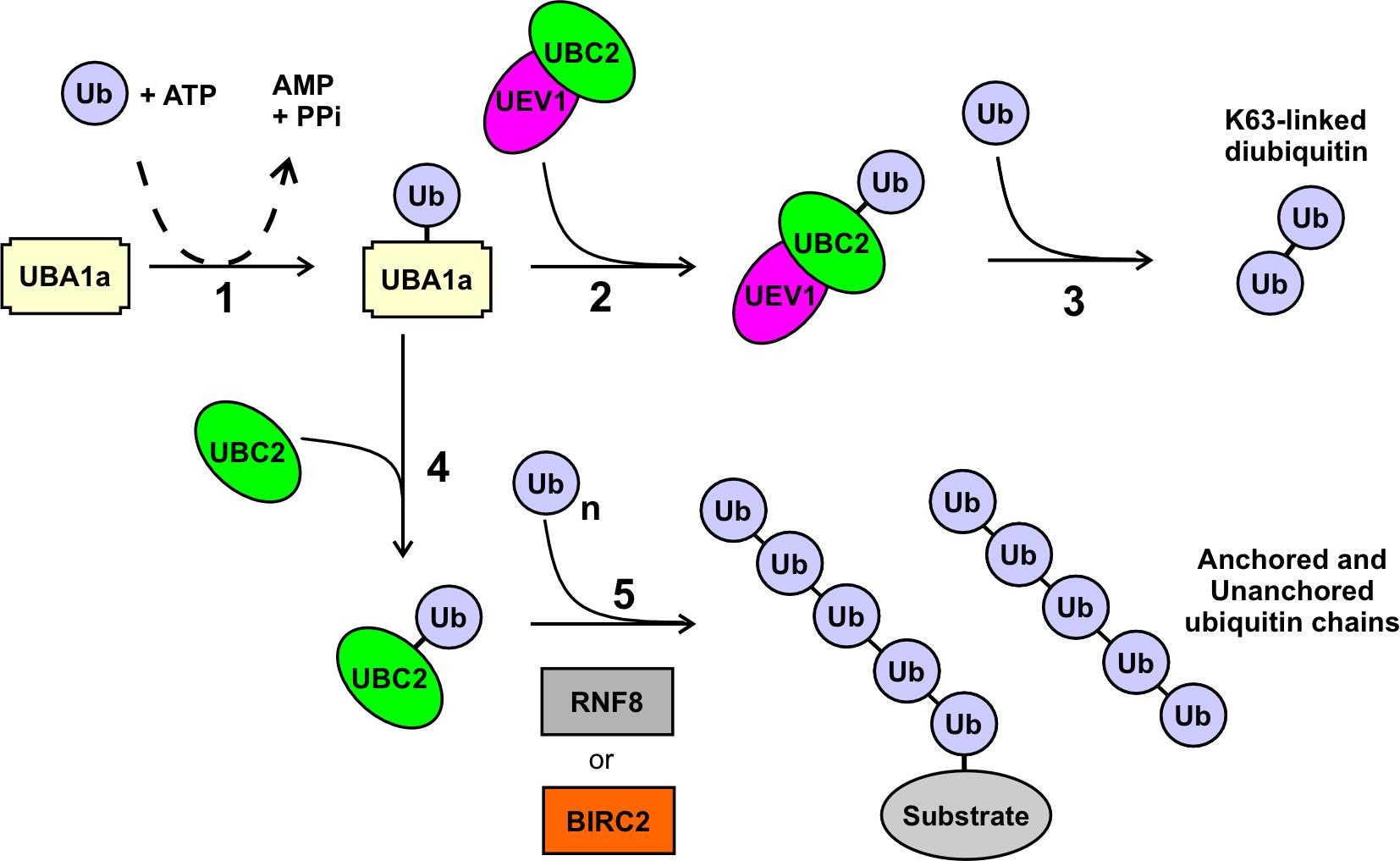
Figure 1. Ubiquitination outcomes mediated by UBC2 and UEV1. In the presence of ATP, ubiquitin (Ub) is activated and covalently attached in step 1 to the E1 UBA1a. In the presence of UEV1 and UBC2, the ubiquitin is transferred in step 2 to the UBC2 component of the UBC2–UEV1 heterodimer, and subsequently in step 3 onto a second ubiquitin molecule to form a K63-linked ubiquitin dimer, as described in Assay A. In the absence of UEV1, a UBC2–Ub complex is formed in step 4, which in the presence of an E3 such as RNF8 or BIRC2 forms polyubiquitin chains that may be unanchored or anchored to an unidentified substrate protein as described in Assay B. The linkage(s) in these chains are not known but are not K63-based.
Materials and Reagents
1.5 mL reaction tubes (Sarstedt, catalog number: 72.690.001)
100 mm square Petri dishes (Thermo Scientific, catalog number: 11349273)
HEPES (Fisher Bioreagents, catalog number: BP310-1)
NaCl (Fisher Chemicals, catalog number: S/3161/65)
MgCl2 (Sigma, catalog number: 63064)
DTT (Melford Laboratories, catalog number: D11000)
ATP (Sigma-Aldrich, catalog number: A2383)
Ubiquitin (R&D Systems, catalog number: U-100H-10M)
NuPAGE 4 to 12%, Bis-Tris, 1.0 mm, mini protein gels (Invitrogen, catalog number: NP0322BOX)
NuPAGE MES-SDS running buffer (20×) (Invitrogen, catalog number: NP0002)
NuPAGE LDS sample buffer (4×) (Invitrogen, catalog number: NP0007)
β-Mercaptoethanol (PanReac AppliChem, catalog number: A1108)
SeeBlue Plus2 pre-stained protein standard (Invitrogen, catalog number: LC5925)
PierceTM 20× TBS buffer (ThermoFisher, catalog number: 28358)
Tween-20 (Sigma, catalog number: P1379)
iBlot 2 nitrocellulose transfer stacks (Invitrogen, catalog number: IB23001)
Ethanol (VWR chemicals, catalog number: MFCD00003568)
Bovine serum albumin (BSA) (Sigma, catalog number: A3294)
Milk powder (Marvel)
Mono and polyubiquitylated conjugates, mAb (FK2) antibody (Ubiquigent, catalog number: 68-0121-500)
Ub-K63 mouse anti-human, clone: HWA4C4 (Affymetrix eBioscienceTM, catalog number: 14-6077-82)
HRP-conjugated anti-mouse antibody (Promega, catalog number: W4021)
Clarity Western ECL substrate (Bio-Rad, catalog number: 1705060)
Clarity Max Western ECL substrate (Bio-Rad, catalog number: 1705062)
Purified recombinant E1 (UBA1a, prepared under reducing conditions, storage: -70 °C) (Burge et al., 2020)
Purified recombinant E2 (UBC2, prepared under reducing conditions, storage: -70 °C) (Burge et al., 2020)
Purified recombinant E2 variant (UEV1, storage: -70 °C) (Burge et al., 2020)
Purified recombinant E3 (GST-BIRC2 or GST-RNF8, storage: -70 °C) (Ubiquigent, catalog number: 63-0015-025 or 63-0021-025)
di-ubiquitin, K63-linked (storage: -70 °C) (Ubiquigent, catalog number: 60-0107-010)
Reaction buffer (10×) (see Recipes)
SDS-PAGE sample buffer (4×) (see Recipes)
1× TBSt (see Recipes)
Equipment
Dry block heater (Grant QBD1)
Protein electrophoresis equipment (XCell SureLock Mini-Cell, EI0001)
Protein transfer system (iBlot 2 Dry Blotting System, Thermo Fisher Scientific)
Gel rocker
Microplate shaker (Grant, PMS-1000i)
Chemi-blot imager (ChemiDoc Imaging System, Bio-Rad)
Procedure
文章信息
版权信息
© 2022 The Authors; exclusive licensee Bio-protocol LLC.
如何引用
Burge, R. J., Jameson, K. H., Wilkinson, A. J. and Mottram, J. C. (2022). In vitro Di-ubiquitin Formation Assay and E3 Cooperation Assay. Bio-protocol 12(21): e4547. DOI: 10.21769/BioProtoc.4547.
分类
微生物学 > 微生物生物化学 > 蛋白质 > 活性
生物化学 > 蛋白质 > 活性
生物科学 > 生物技术 > 微生物技术
您对这篇实验方法有问题吗?
在此处发布您的问题,我们将邀请本文作者来回答。同时,我们会将您的问题发布到Bio-protocol Exchange,以便寻求社区成员的帮助。
提问指南
+ 问题描述
写下详细的问题描述,包括所有有助于他人回答您问题的信息(例如实验过程、条件和相关图像等)。
Share
Bluesky
X
Copy link


